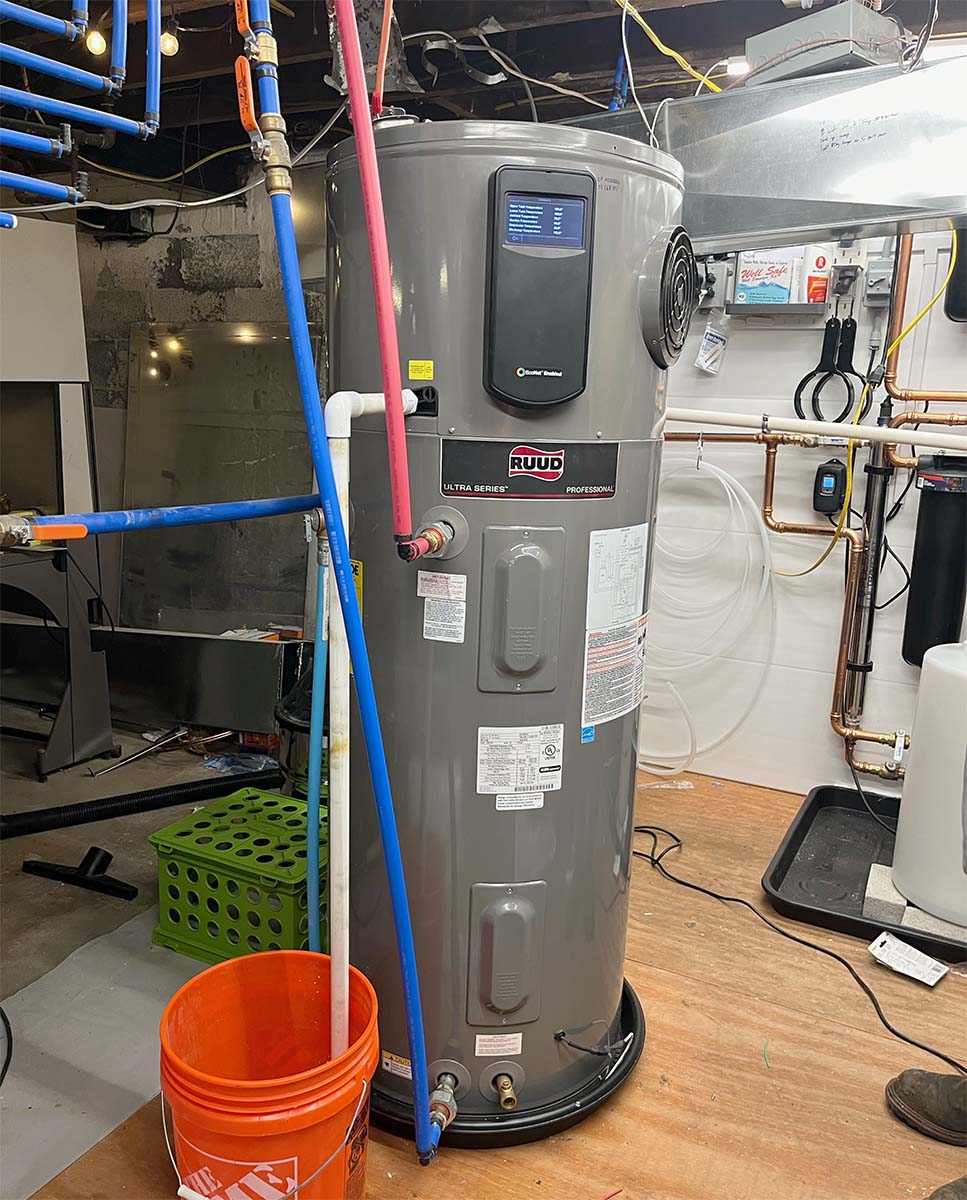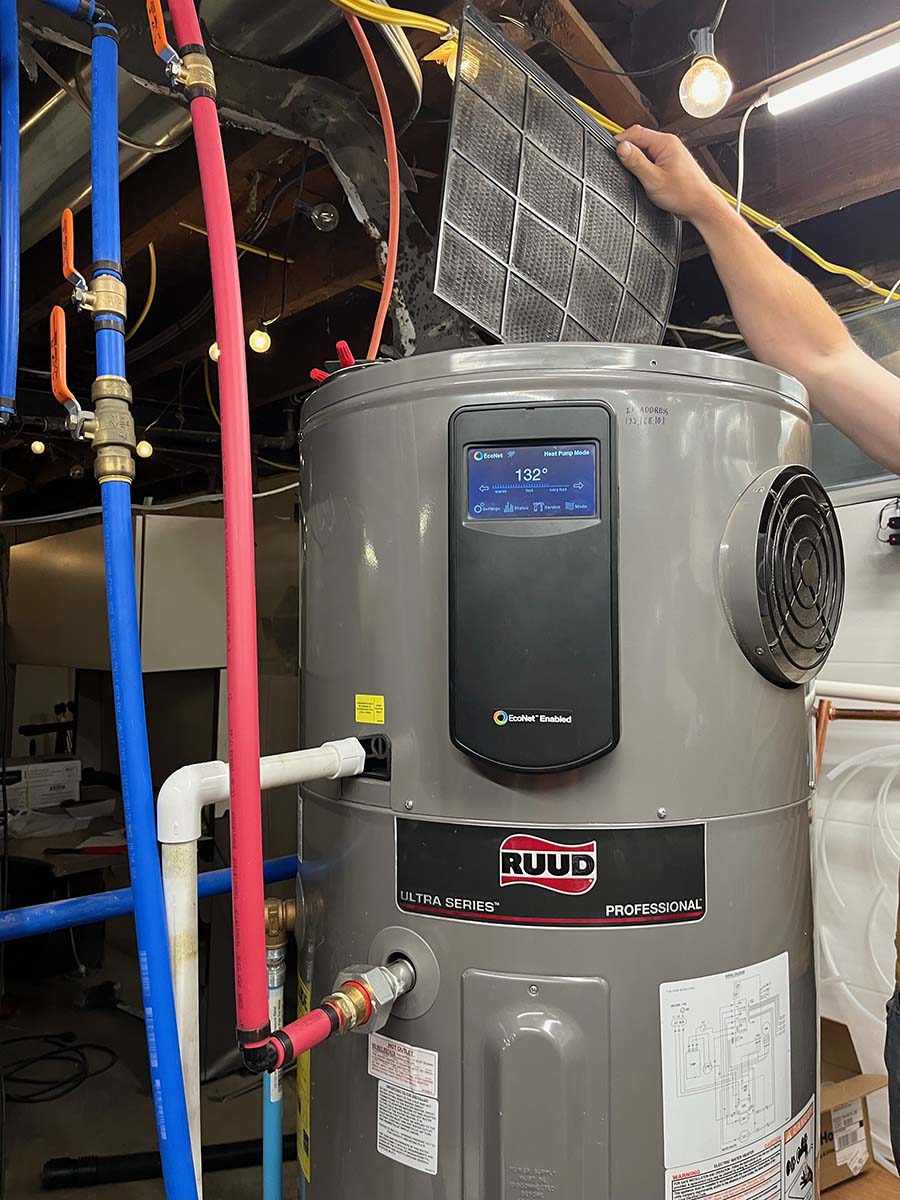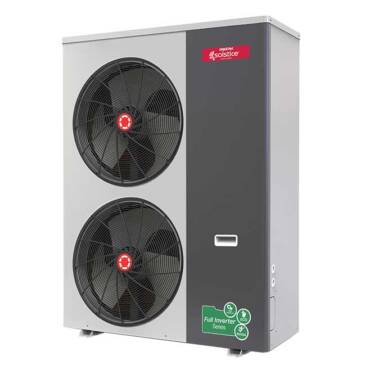✕
The Department of Energy (DOE) recently announced it will be investing $85 million in four manufacturers to accelerate the production of electric heat pumps, heat pump hot water heaters, and heat pump components. While many consumers are now familiar with heat pump technology as a method of using electricity and the refrigeration cycle to heat air, they are likely also curious about heat pump technology’s ability to heat potable water. Efforts to scale production of heat pump water heaters come on the heels of the U.S. Congress and the DOE finalizing a range of energy-efficiency standards for residential domestic water heaters, which will require manufacturers to meet new and amended efficiency standards, a mandate expected to save American households approximately $7.6 billion per year on utilities, and significantly cut energy waste and carbon pollution.
The current standards for water heaters, which are specified in the Code of Federal Regulations (CFR) in 10 CFR 430.32(d), have been in effect since 2010. One aspect of the upcoming changes is the slight increase in the Uniform Energy Factor (UEF), the measure of a water heat’s overall efficiency in converting fuel to hot water. The higher the UEF the more efficient the water heater is (10 CFR Part 430, Subpart B, Appendix E). For example, the UEF of a 55-gallon electric storage water heater with a medium draw pattern will increase from about 2.11 to 2.50. The DOE estimates that by 2029 more than half of all newly manufactured electric water heaters will use heat pump technology.
For more insight into this type of appliance, I sat down with Matt Oakes, service technician and owner of Modern HVACR LLC, who recently converted his home to all-electric appliances, including a Ruud Ultra Series Hybrid water heater and has already seen a return on his investment. While Oakes advises homeowners to do their own research and hire a trained professional, heat pump technology offers a reliable alternative to carbon-based fuels.
Terminology and Comparison to a Regular Heat Pump
Heat pump water heaters are fueled completely by electricity; however, unlike typical electric water heaters, they have the added component of using the refrigeration cycle. Most heat pump water heaters are “hybrid,” meaning they have backup electric-resistance heating elements to keep up with high heating demands.
The CFR defines a water heater as a product that uses oil, gas, or electricity to heat potable water upon demand and is regulated as three sub-categories: storage-type, instantaneous-type, and heat pump type. They define the latter as a product with “a maximum current rating of 24 amperes at a voltage no greater than 250 volts, which are designed to transfer thermal energy from one temperature level to a higher temperature level for the purpose of heating water, including all ancillary equipment such as fans, storage tanks, pumps, or controls necessary for the device to perform its function.” In other words, heat pump water heaters use a compressor, expansion valve, two coils, and a fan to absorb heat from the surrounding space and reject it into the water, creating hot water and, as a byproduct, a cooling effect of the surrounding space.

FAMILIAR TECHNOLOGY: Heat pump water heaters work just like a heat pump air conditioner in heating mode. (Courtesy of Modern HVACR LLC)
Heat pump water heaters work just like a heat pump air conditioner in heating mode. The compressor compresses gas refrigerant into the condensing coil where the refrigerant, at high pressures, changes from gas to liquid, rejecting its heat into the heat sink (which is water in the case of a water heater). The high-pressure liquid refrigerant then moves into the metering device where its pressure drops as it enters the evaporator coil. A fan draws air across the evaporator to cause the low-pressure refrigerant to change from a liquid to a gas, and the process starts all over again at the suction side of the compressor. All components are electric, including the metering device. Unlike a typical heat pump, a heat pump water heater does not have a reversing valve. A reversing valve is not necessary because water heaters are expressly designed to add heat to water, not remove it.
The evaporator and fan are typically mounted on top of the water heater, which causes the surrounding space to feel cold. However, some manufacturers make split-style heat pump water heaters which have outdoor units that look similar to a mini-split. With split systems, the compressor is outside, and it uses heat from the outside air to heat the water. According to Energy Star, split system heat pumps can operate in almost any climate, with the ability to extract heat from outdoor temperatures as cold as -25°. At sub-freezing temperatures, however, split heat pump water heaters will have longer run times and may have longer recovery times.
While the standard water temperature many heaters can achieve is 140°, the DOE recommends 120 to save energy. To achieve this, most heat pump water heaters require installation in locations with at least 700-1,000 cubic feet of air space around the water heater.
Before Purchasing a Heat Pump Water Heater
Choosing a heat pump water heater is a similar process to choosing any water heater. Homeowners should first determine the fuel source and whether they want it to be a storage tank style or instantaneous (tankless). Heat pump water heaters are the most efficient style of electric water heaters, and they can be storage style or tankless. To further improve cost-efficiency, other factors to consider include the desired First Hour Rating (a more useful metric than nominal capacity, how much hot water a full unit can deliver in the first hour of use) or GPM (gallons per minute) for instantaneous heaters and peak hour demand. The DOE has an online tool to help homeowners estimate how many gallons of hot water a home uses during peak demand. Homeowners might also be interested in efficiency ratings, such as COP (coefficient of performance for heat pumps, typically 2.5-4.5) and the aforementioned UEF (typically 3.3-4.1 for heat pump water heaters).
Installation Considerations
If the homeowner is considering replacing their gas-fired or electric water heater with a heat pump water heater, there are a few things to consider regarding the installation. As with any evaporator coil, there will be water condensation that needs to be routed to a drain. The condensate might need to be pumped away or, if it is routed into a plumbing line, trapped.
Space is also an important consideration. If the water heater is in the basement or a closet, it is important to follow the manufacturer’s specifications for room size and clearances. Extremely small and cold spaces are not conducive to heat transfer. Relating to location decisions, because heat pump water heaters have a fan, they tend to be louder than a standard water heater.
Additionally, homeowners have the option to purchase a duct kit if they would like to exhaust the waste cooling somewhere other than the immediate surroundings.
Maintenance Considerations

EASY MAINTENANCE: A common, and easy, preventative maintenance step is to clean the washable filter regularly. (Courtesy of Modern HVACR LLC)
Every manufacturer publishes their recommendations for maintenance periods and instructions in their installation manuals. Oakes strongly encourages owners to educate themselves and call a trained professional when needed. Below are some procedures common among most manufacturers in periodically maintaining a heat pump water heater.
- Cleaning the washable filter
- Flushing the condensate drain line
- Draining or flushing the tank
- Inspecting the anode rod (the sacrificial metal rod that helps reduce tank corrosion), replacing only if necessary
- Inspecting the heating elements, replacing only if necessary
- Exercising the T&P (temperature pressure relief) valve by a trained professional
Whether you require installation, repair, or maintenance, our technicians will assist you with top-quality service at any time of the day or night. Take comfort in knowing your indoor air quality is the best it can be with MOE heating & cooling services Ontario's solution for heating, air conditioning, and ventilation that’s cooler than the rest.
Contact us to schedule a visit. Our qualified team of technicians, are always ready to help you and guide you for heating and cooling issues. Weather you want to replace an old furnace or install a brand new air conditioner, we are here to help you. Our main office is at Kitchener but we can service most of Ontario's cities
Source link


Add Comment